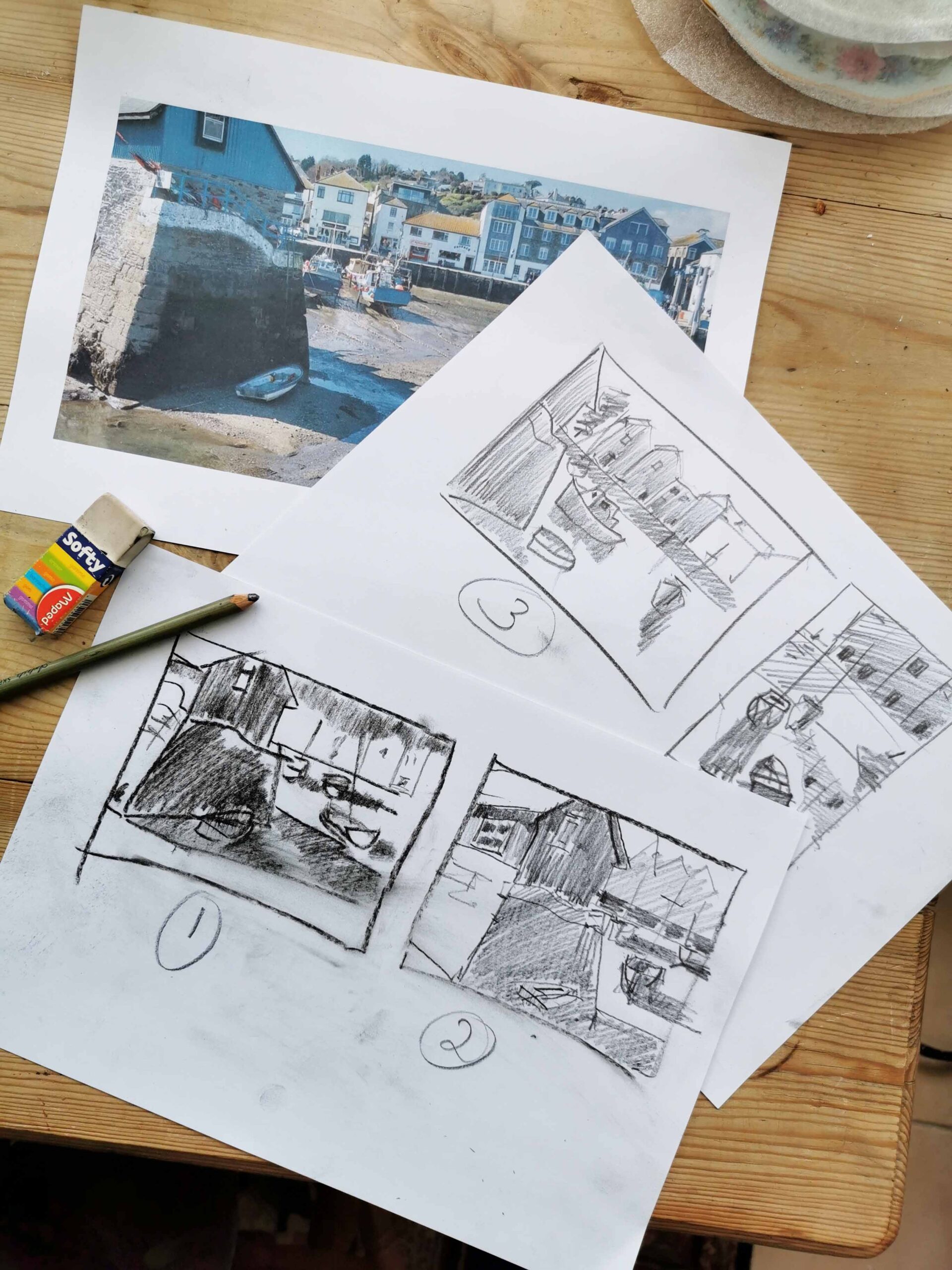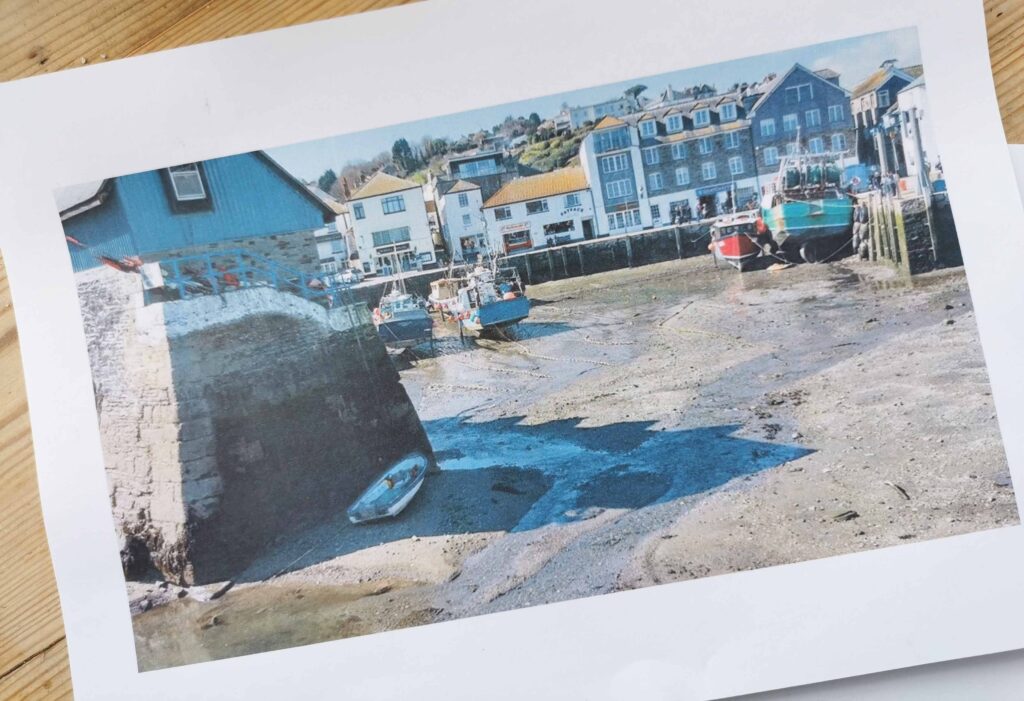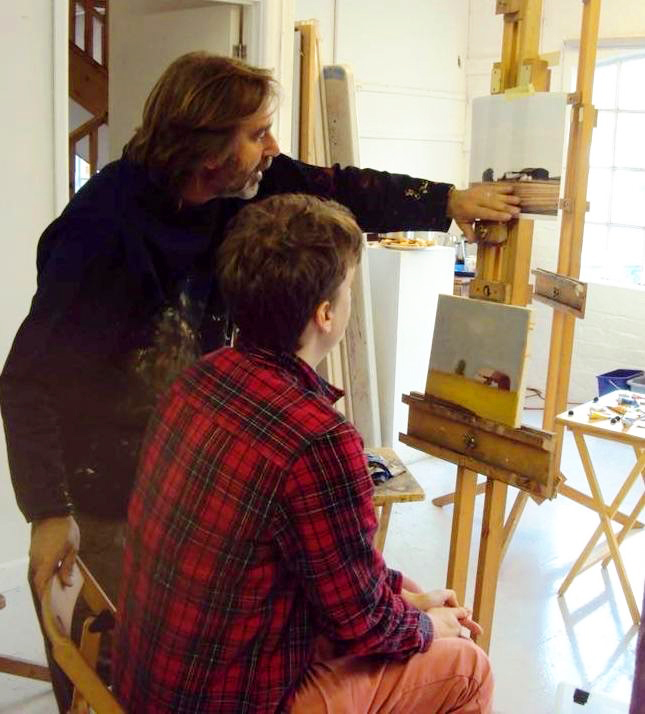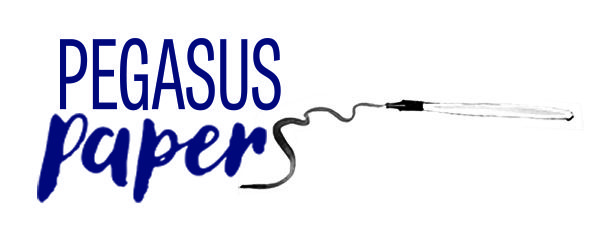Planning your painting

A Guest Blog written by painter and tutor Max Hale
Artists are often people of impetuous activity, usually because the nature of inspiration is fleeting or the need to produce something for a given date is deadline driven. This means that the thought of planning is often pushed to one side as the beginning of a painting starts immediately.
The process of creativity however, shouldn’t begin with painting unless we have prepared and planned first. Otherwise you may find you are still working it out as you start the evolving piece and it’s likely to prove troublesome.
When inspiration hits, it may not be ideal to sit and paint at the time, the subject may be moving or you just don’t have your paints with you. So planning starts with perhaps a photograph or a sketch, preferably more than one to give you options when you get in front of your easel. This becomes your reference.
Apart from capturing a reference the next phase is the most important but even done thoroughly should in practice take no more than half an hour.

A list of do’s
- Study your references, take your time and ask yourself what you would like at the end. This is called ‘visualising’ – which may come as you work through this list. It takes practice.
- Lay your sketches out along with any photographs – if they are on a phone or a tablet, printing them off will help a lot. If you haven’t done any sketches, you MUST.
- Sketch out using all the references in tone, not just line, otherwise the effort will be wasted.
- Best size for this is about 3 x 4 inches or whichever suits your format
- Imagine you are given the ability to change direction and strength of light to create the ambience and mood you want. Don’t forget the shadows.
- Move around the scene using the format of your paper or canvas and see which gives you the best view. Then do another tonal sketch.
- Do this until you have a view which you prefer. Or as many sketches as you feel you need
- Move your horizon up or down to improve the composition. Up will emphasis the land or ground area and down will emphasise the sky or the top of the construction.
- Use your sketch as your master guide and anything else as colour or detail guide.
- Hold your nerve and start to paint.
Good luck!

If you are interested in joining one of Max Hale’s classes, please browse all the options on his website and book online. His regular, term time classes at Pegasus Art will recommence from the first week in September.
Max also shares his tips and techniques on his new You Tube channel here.
